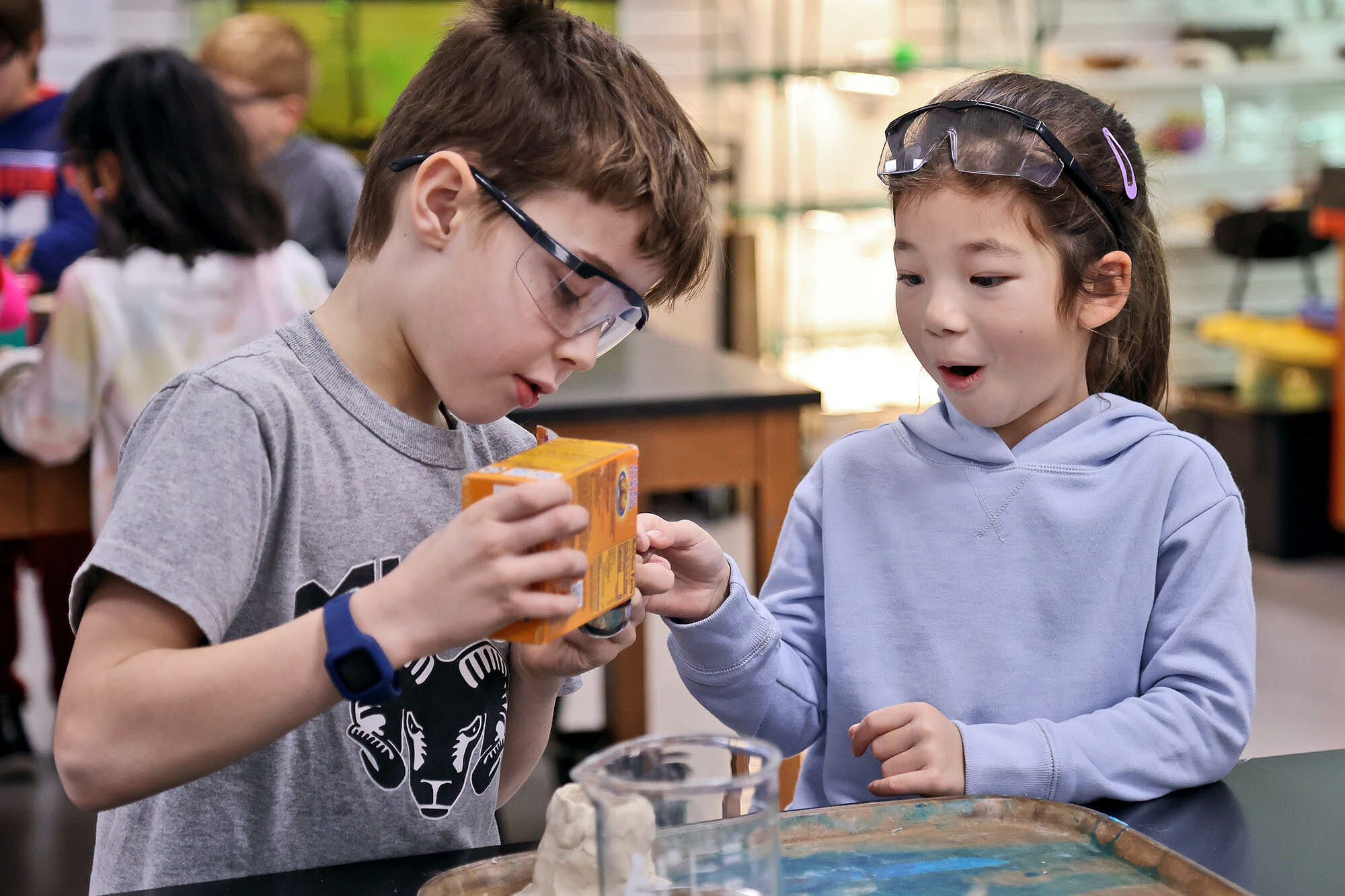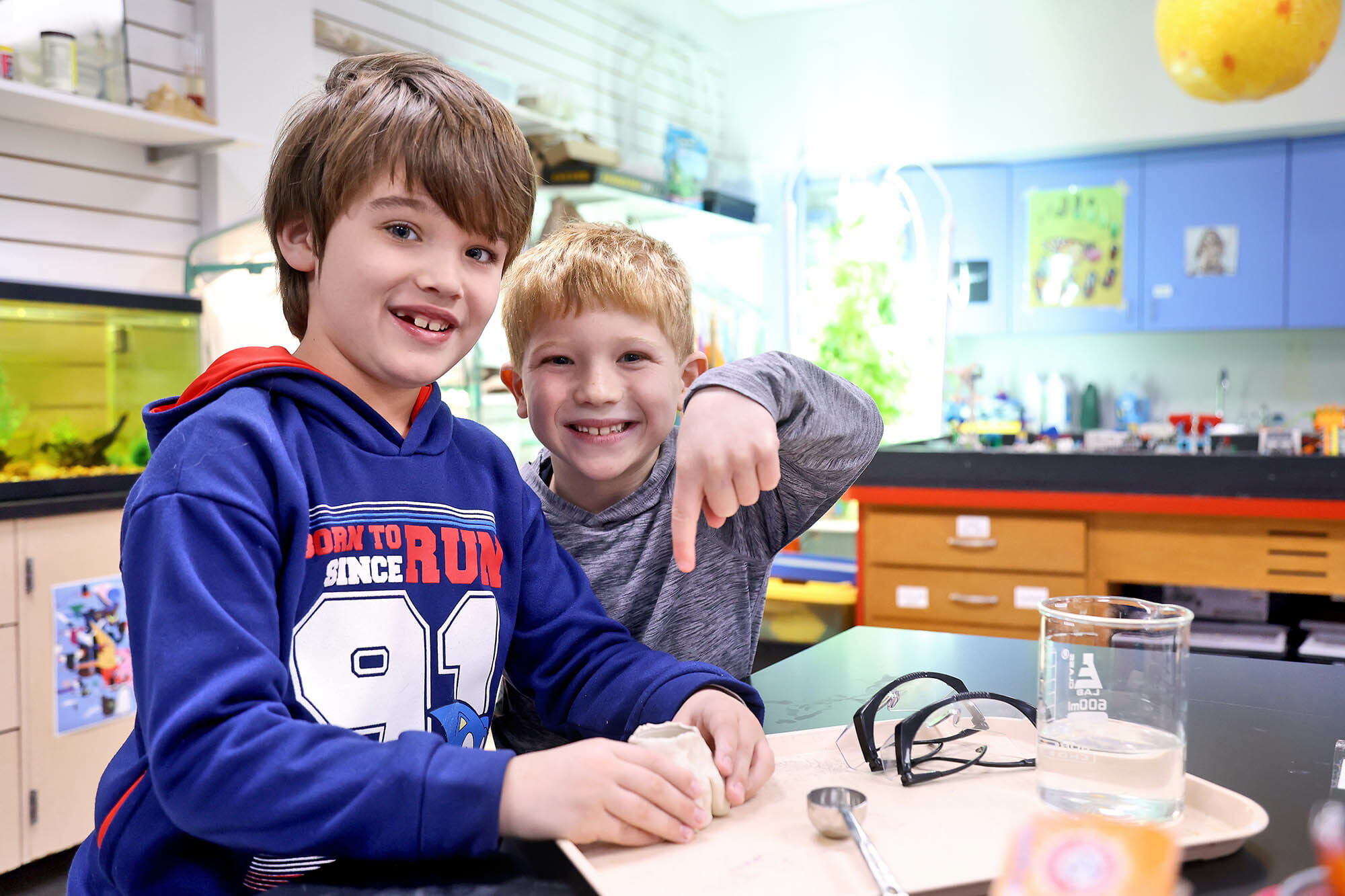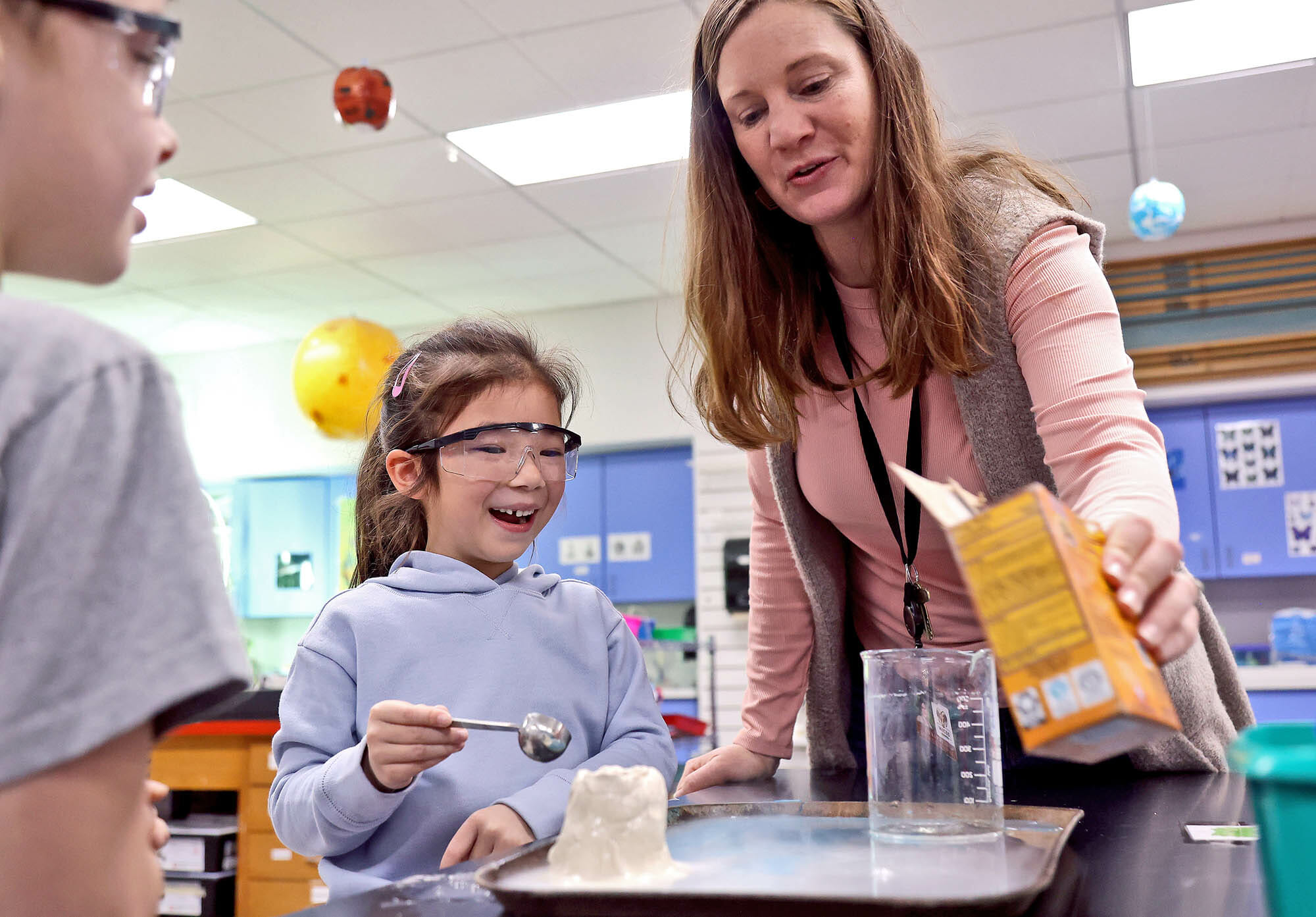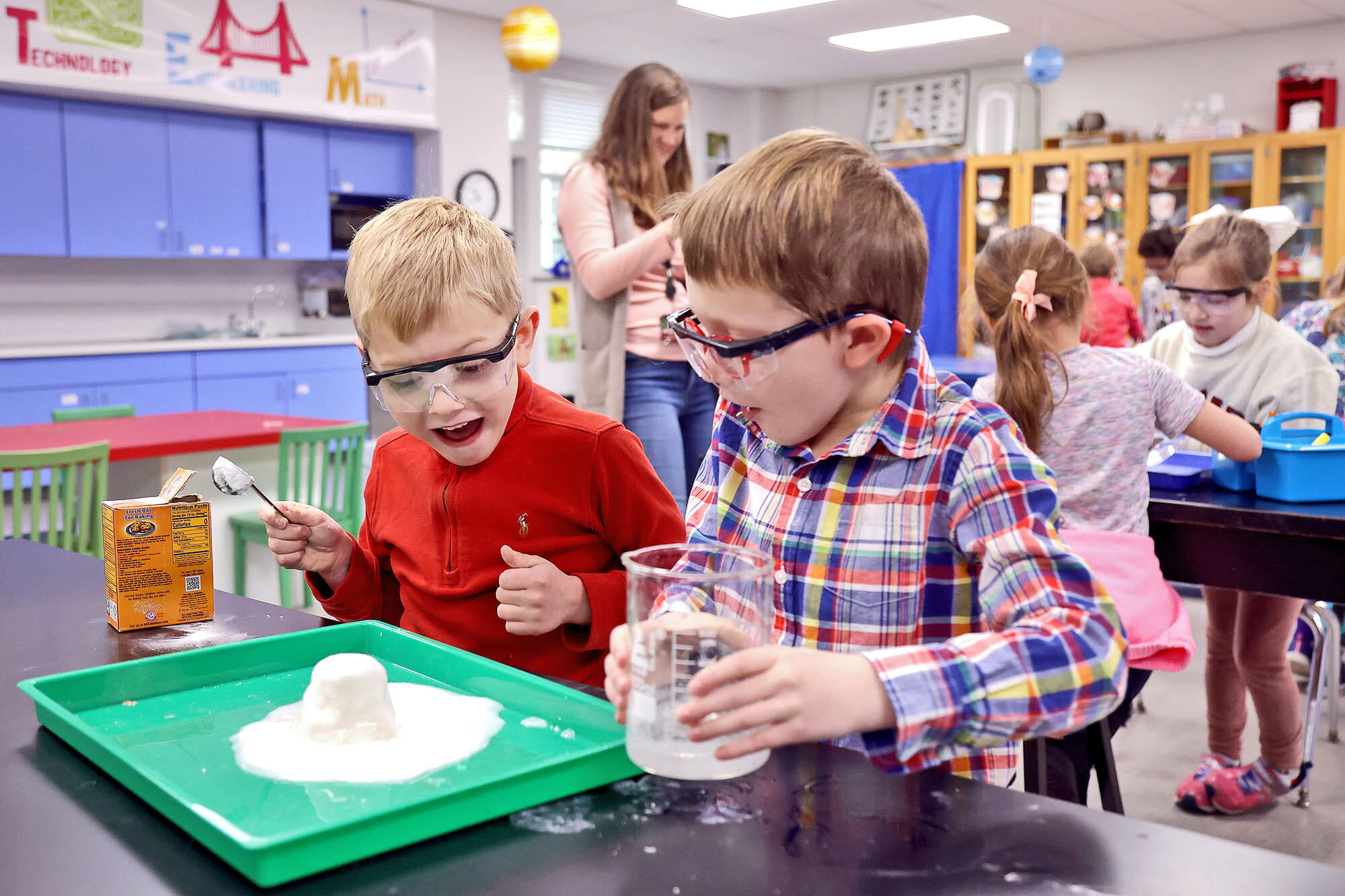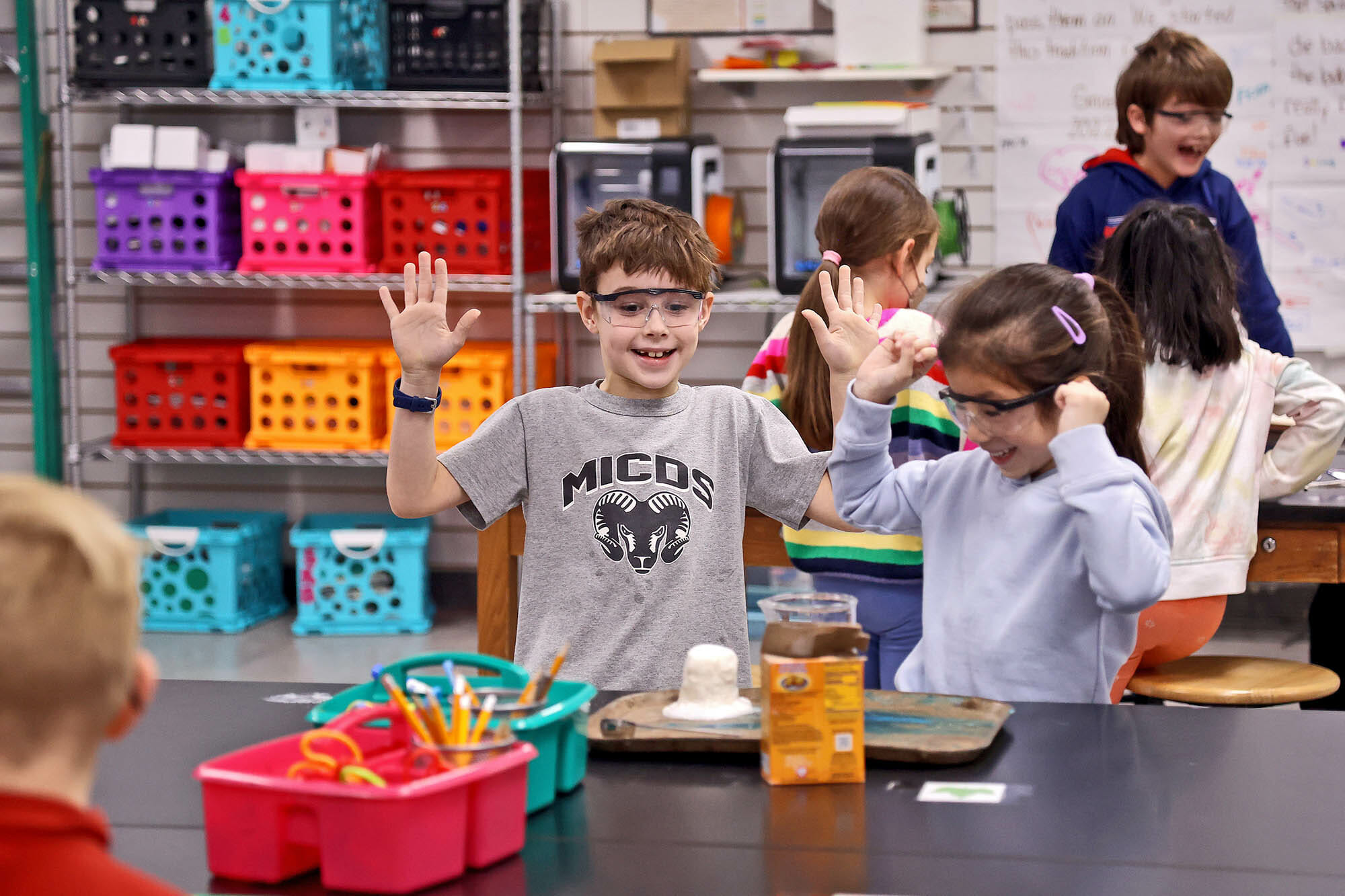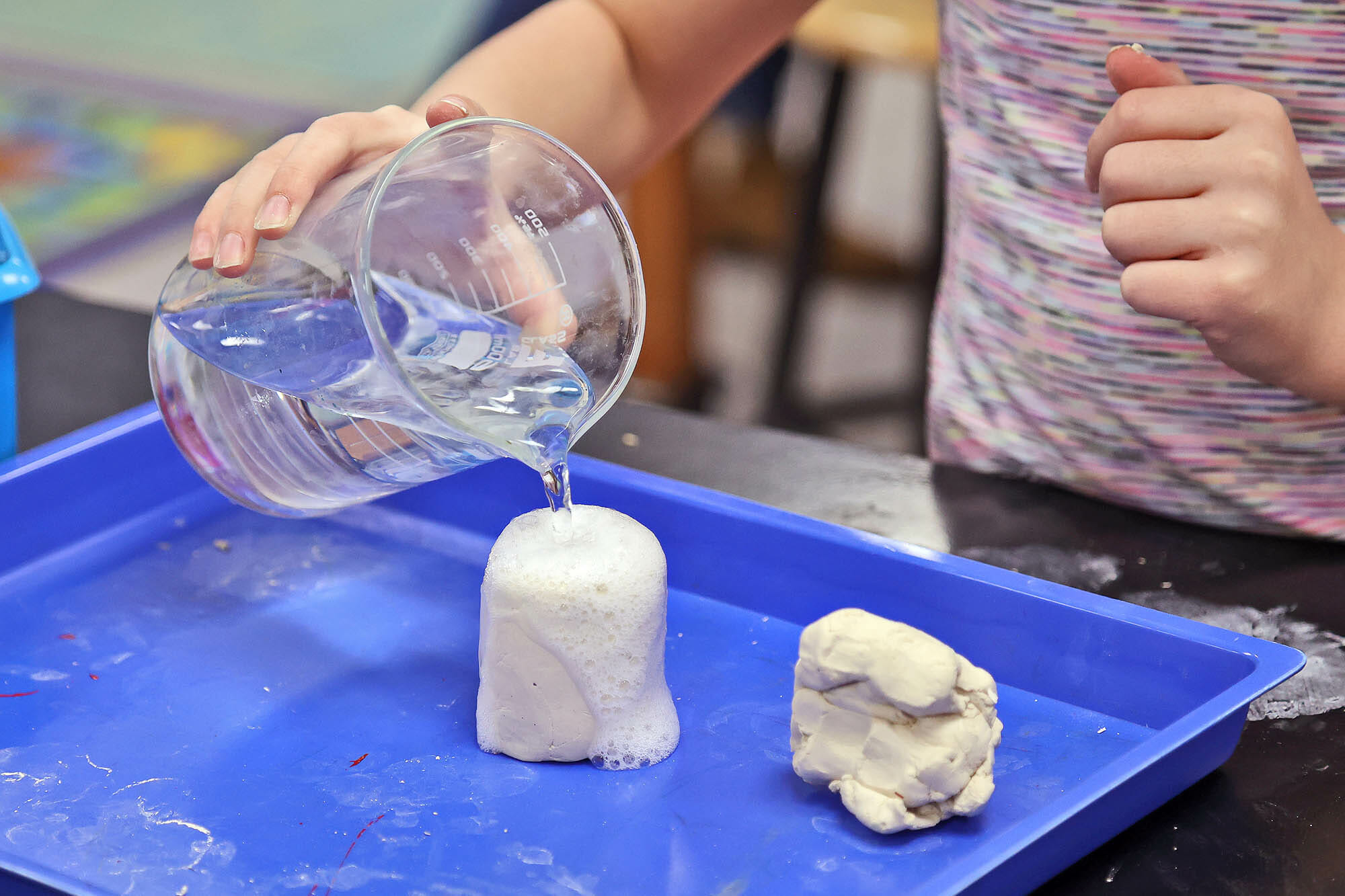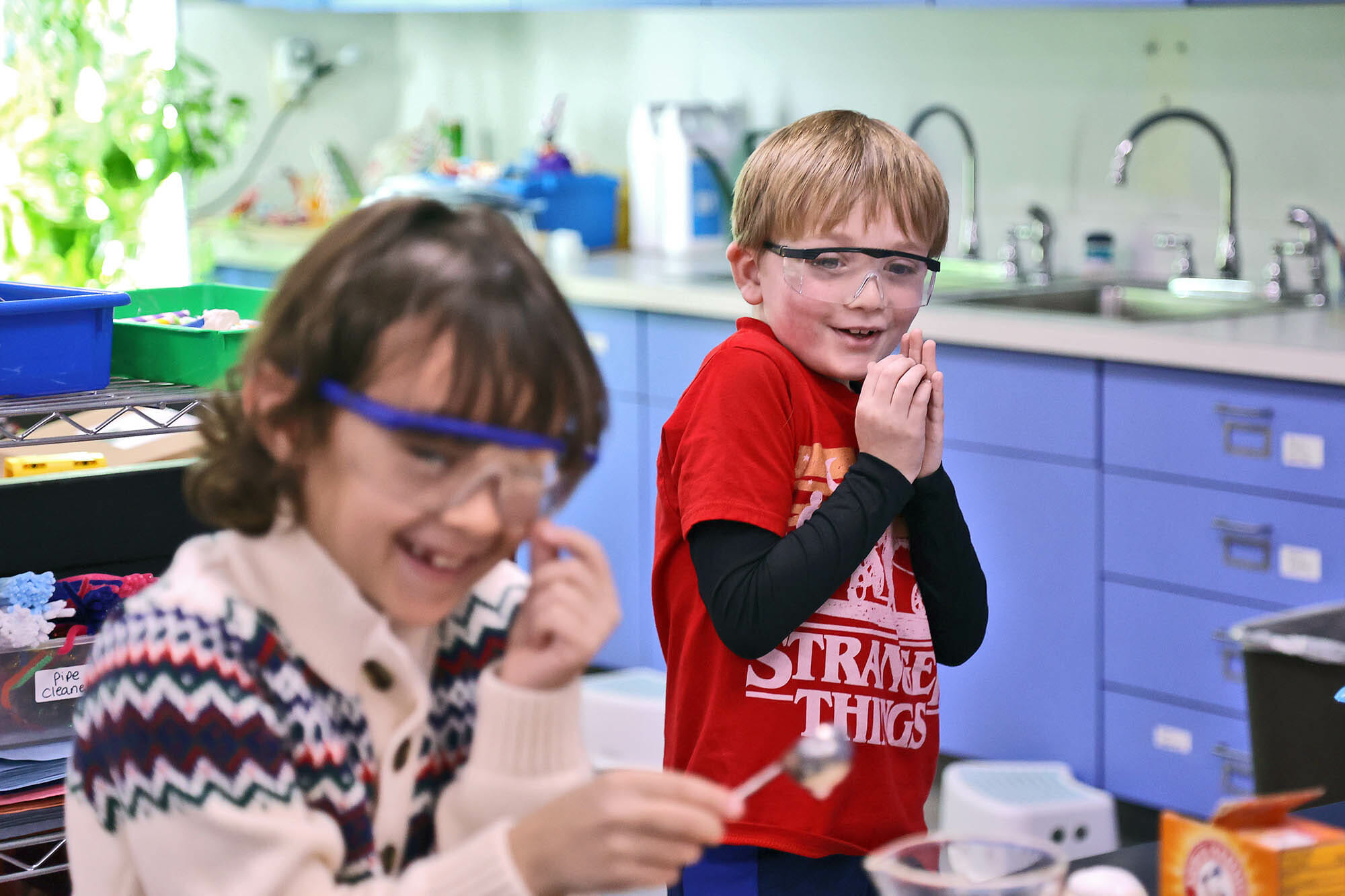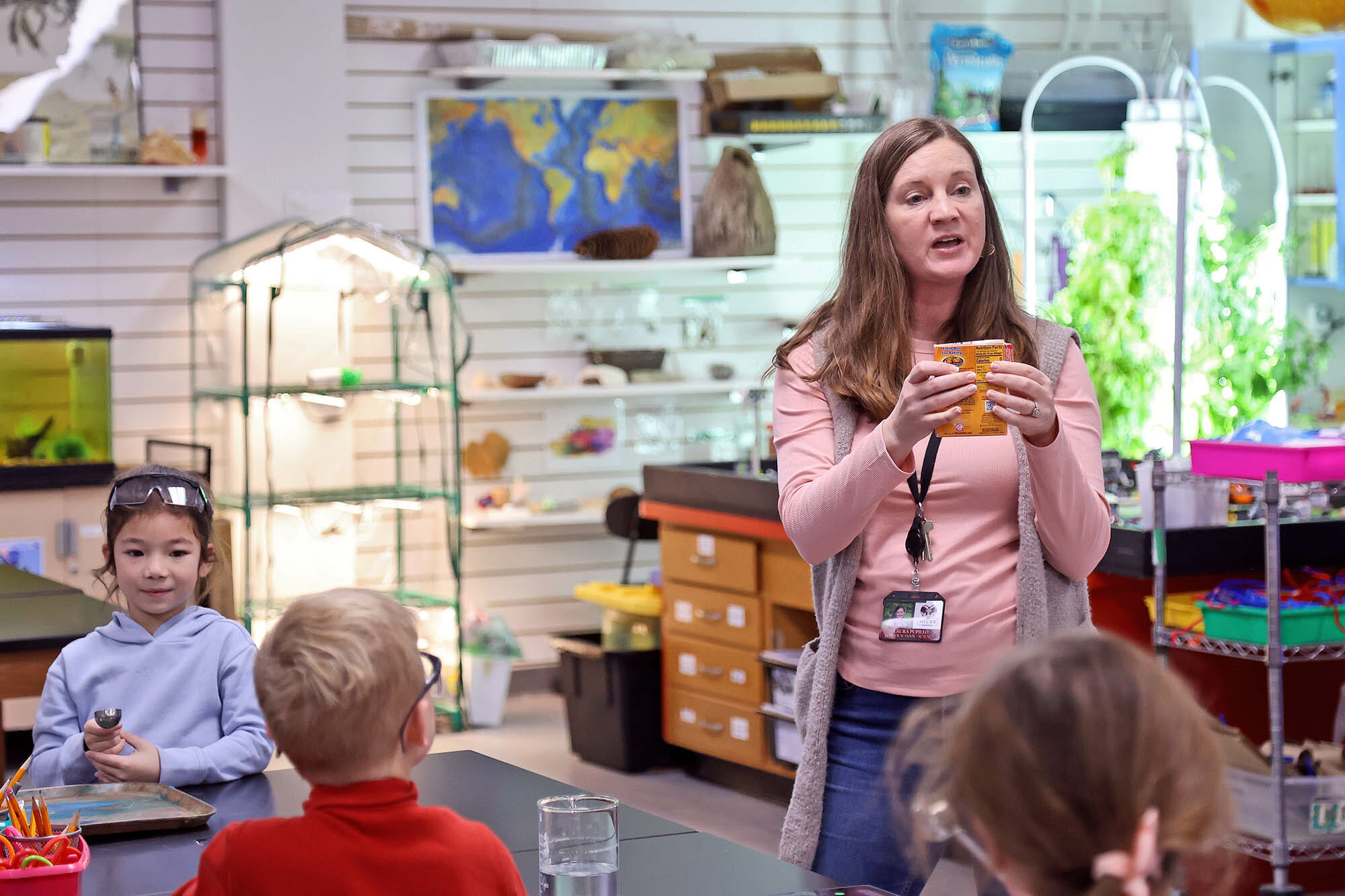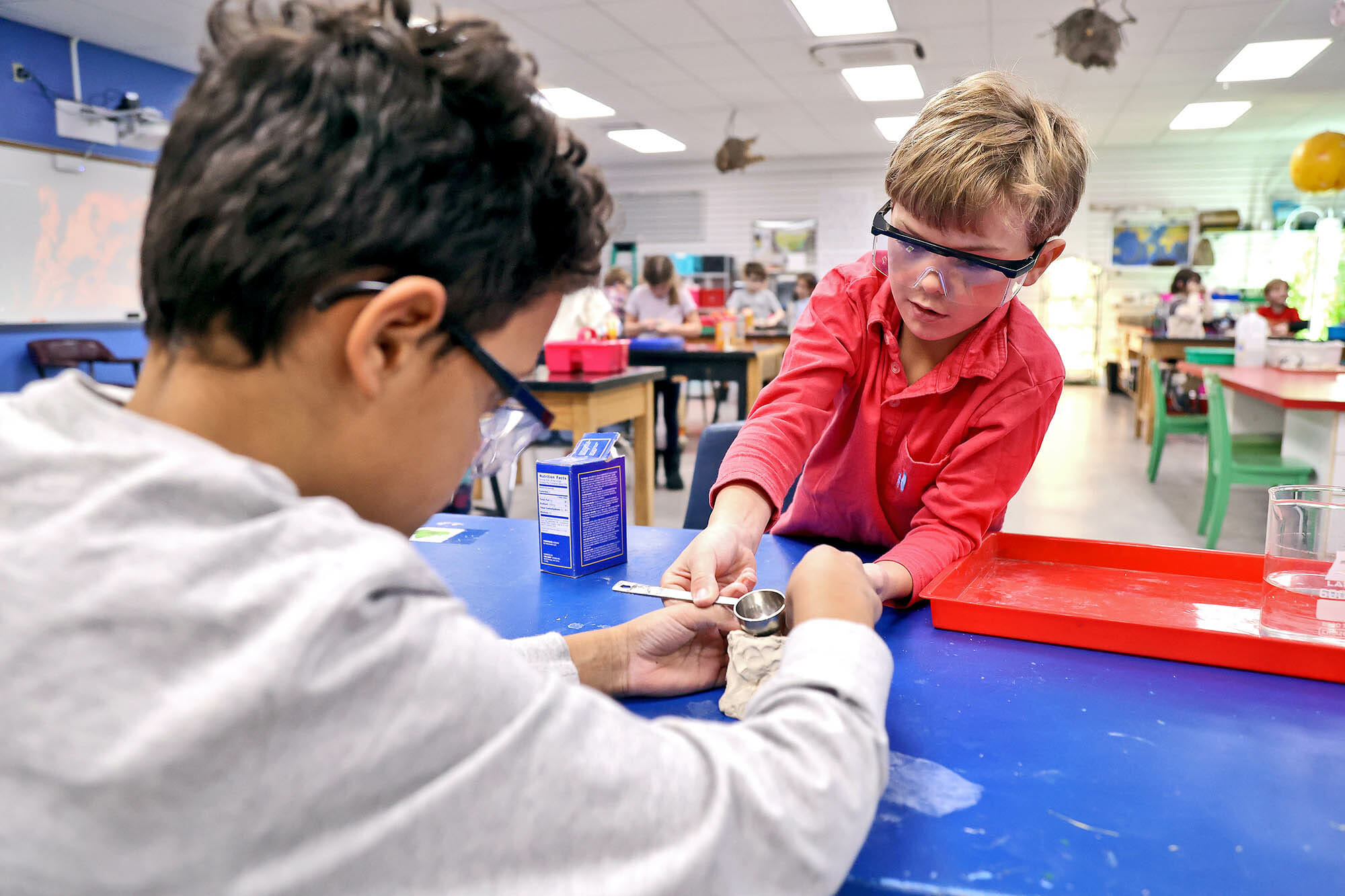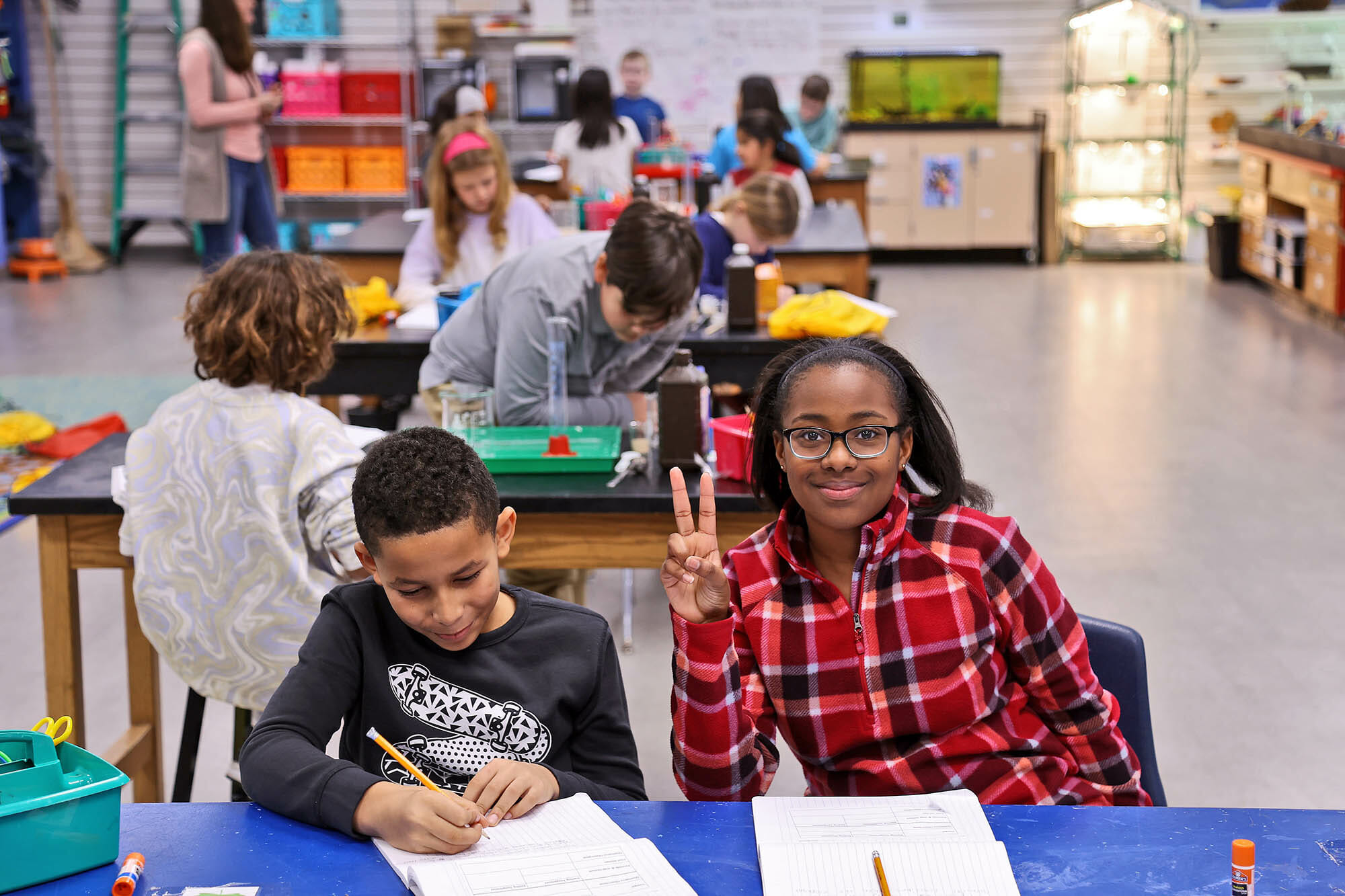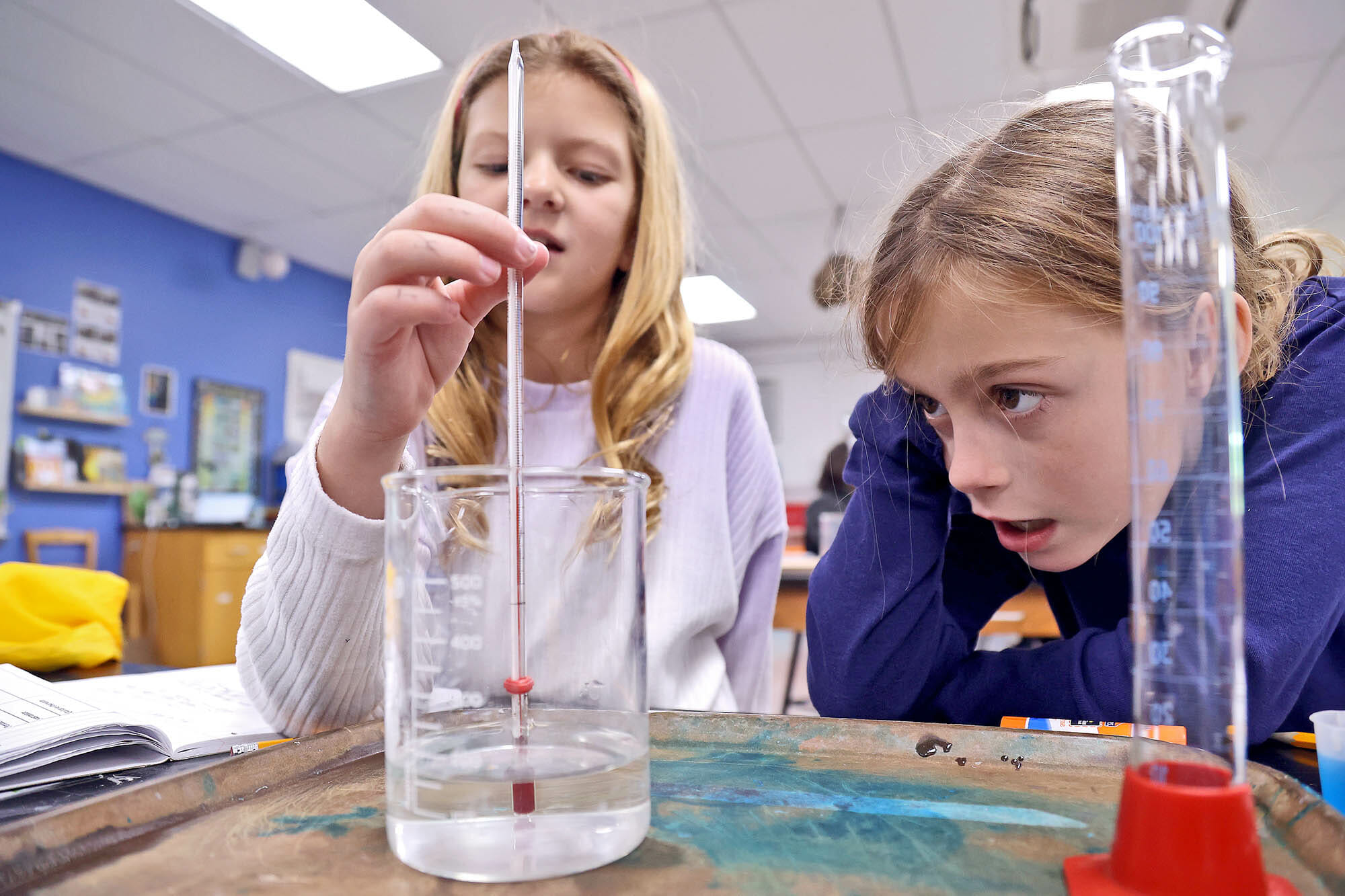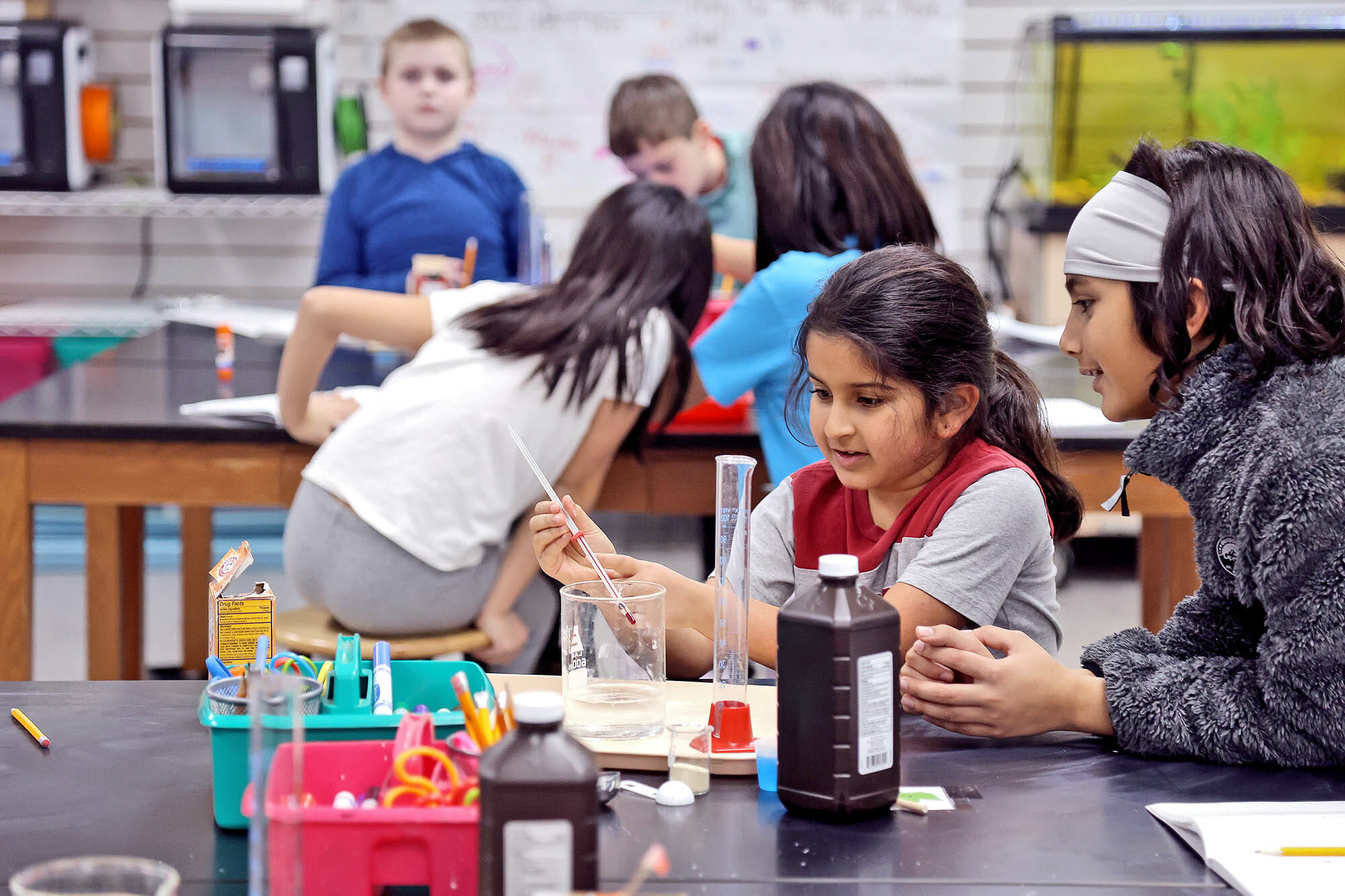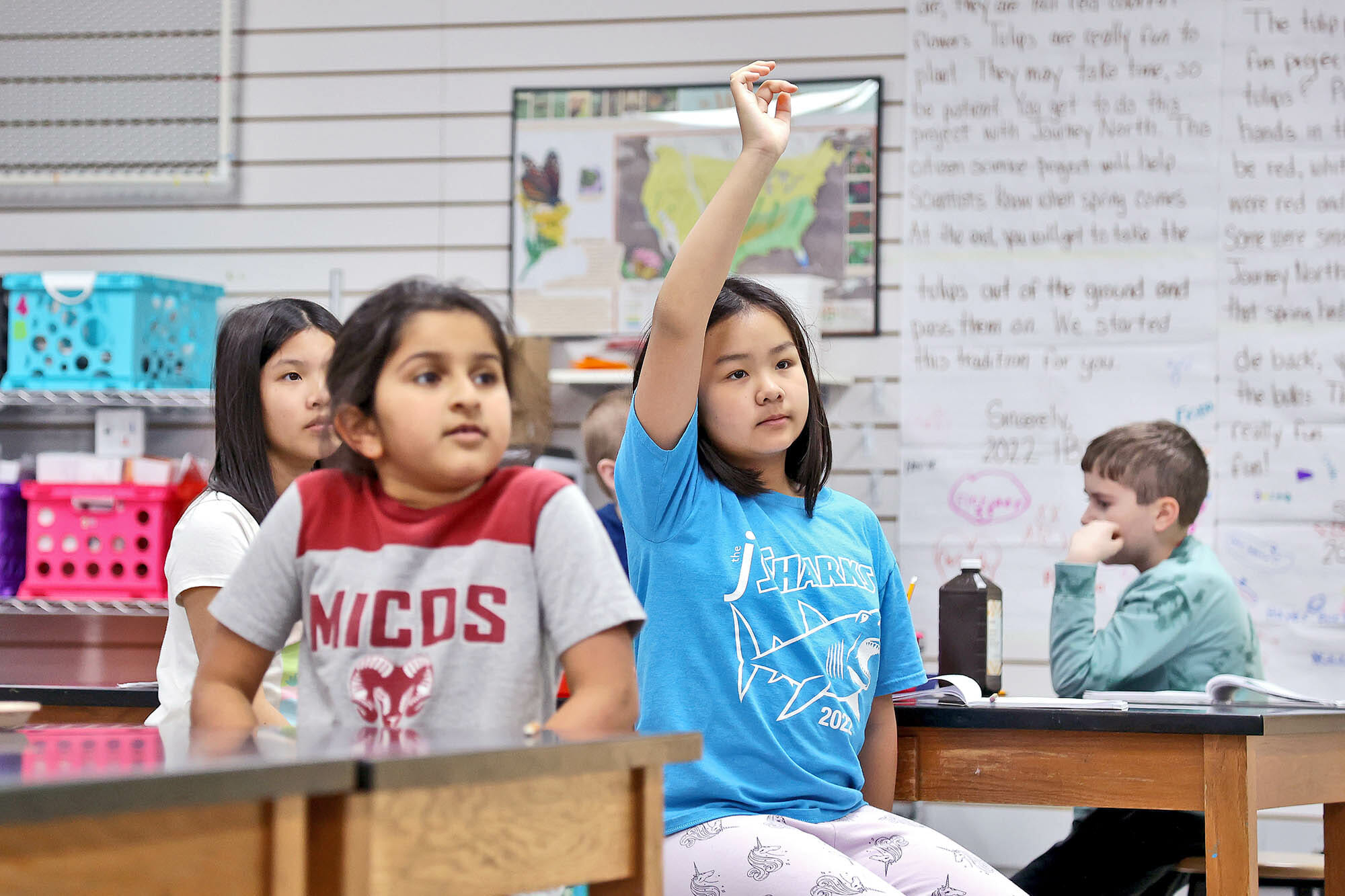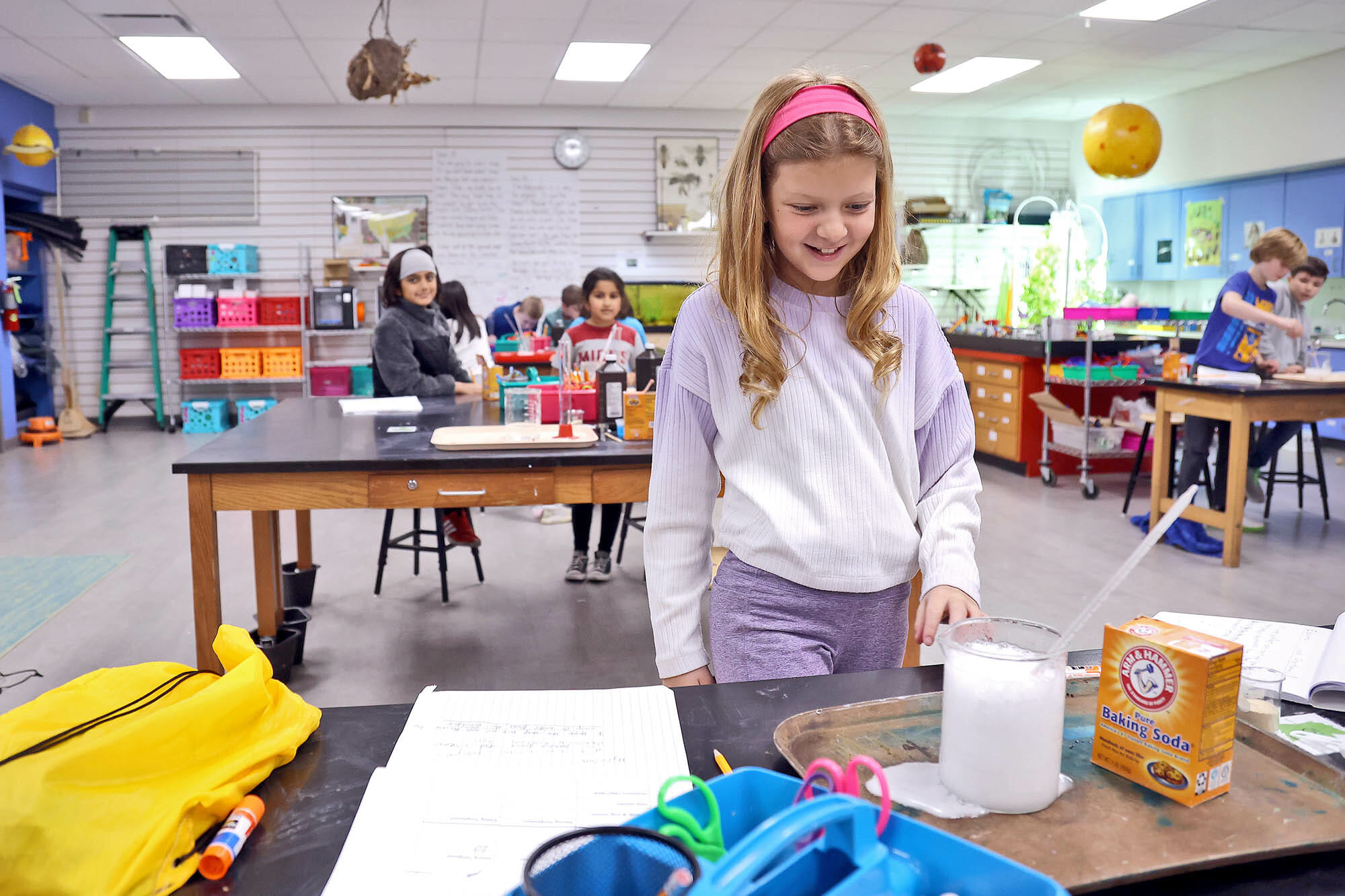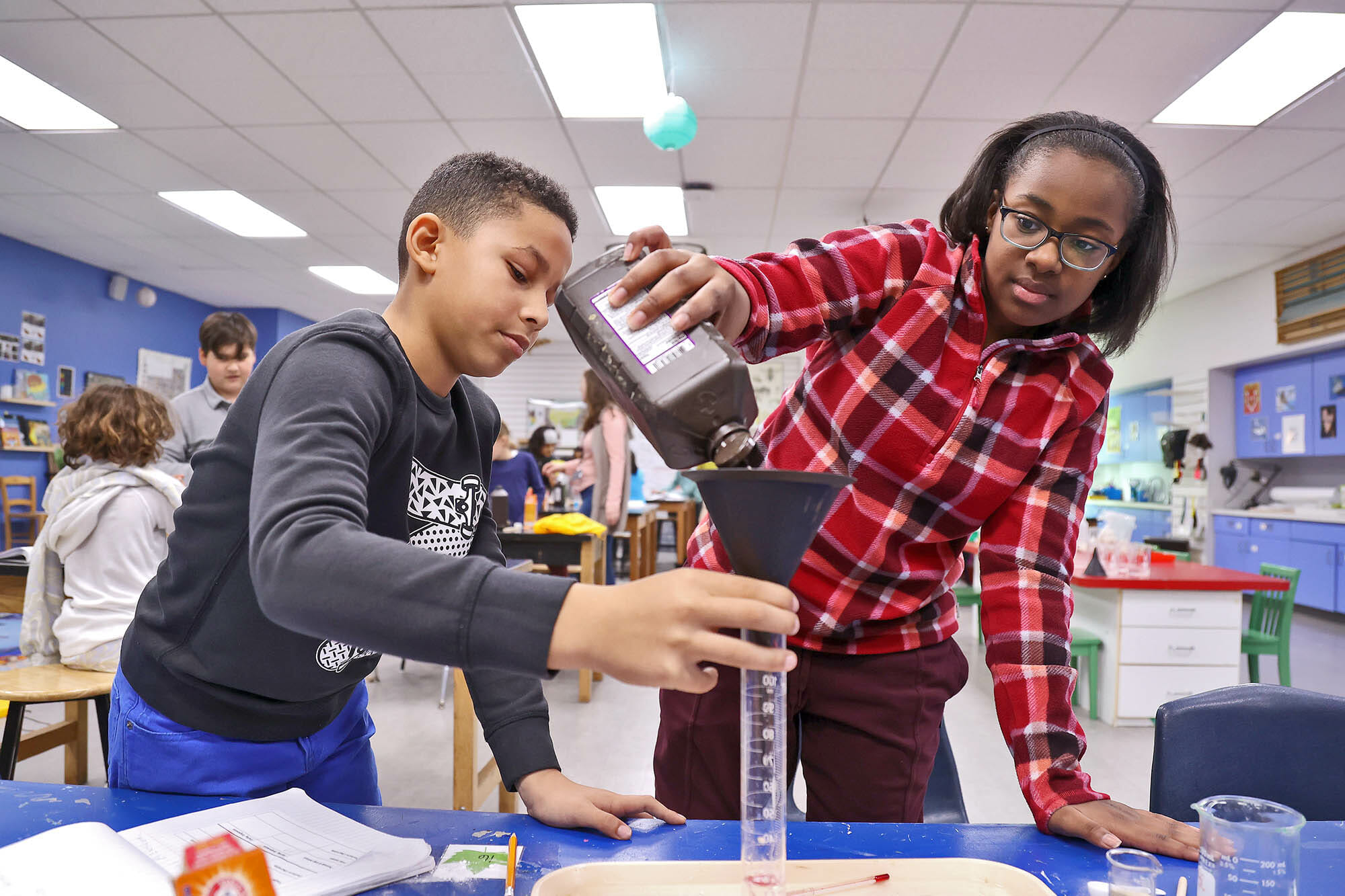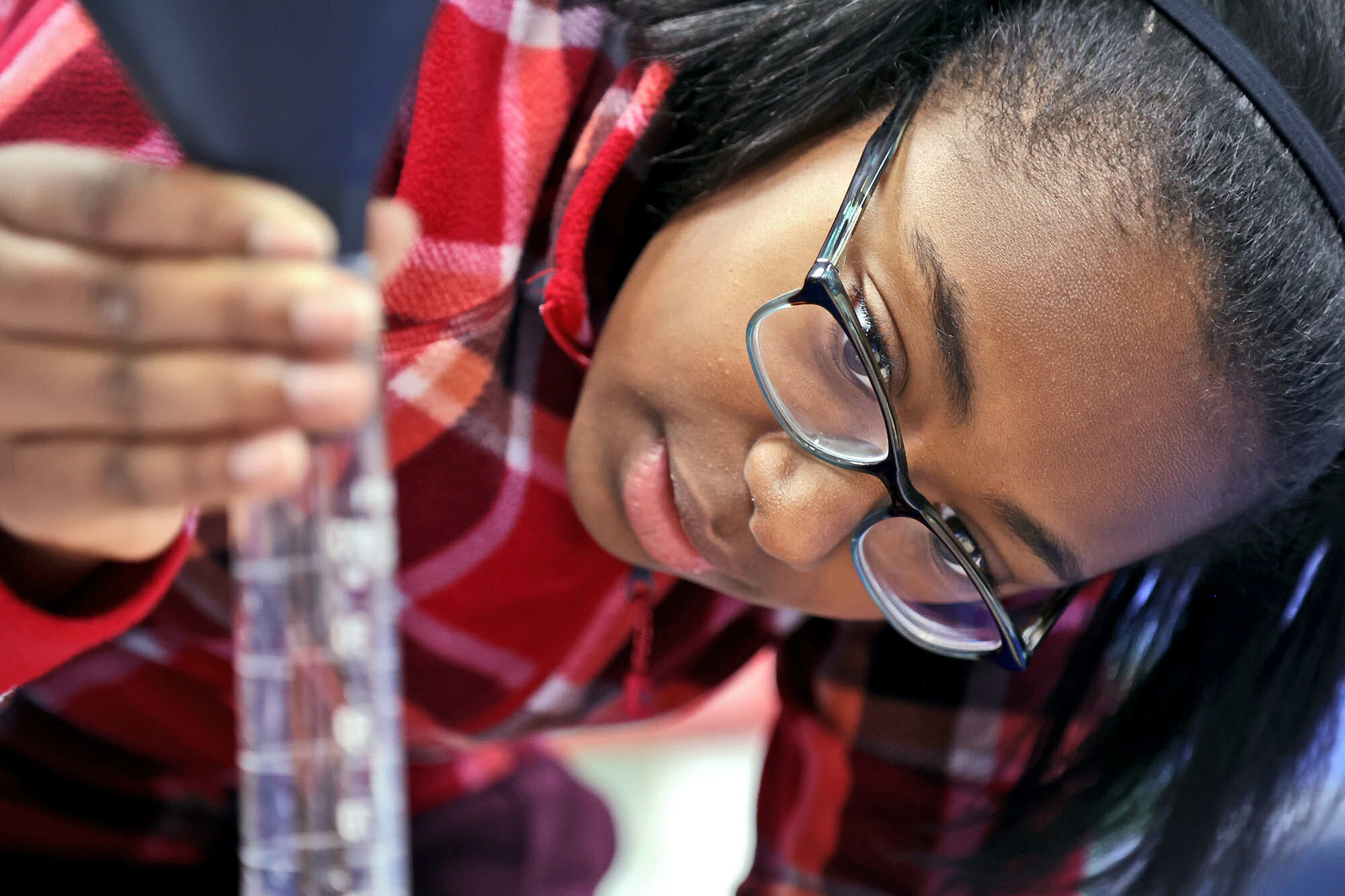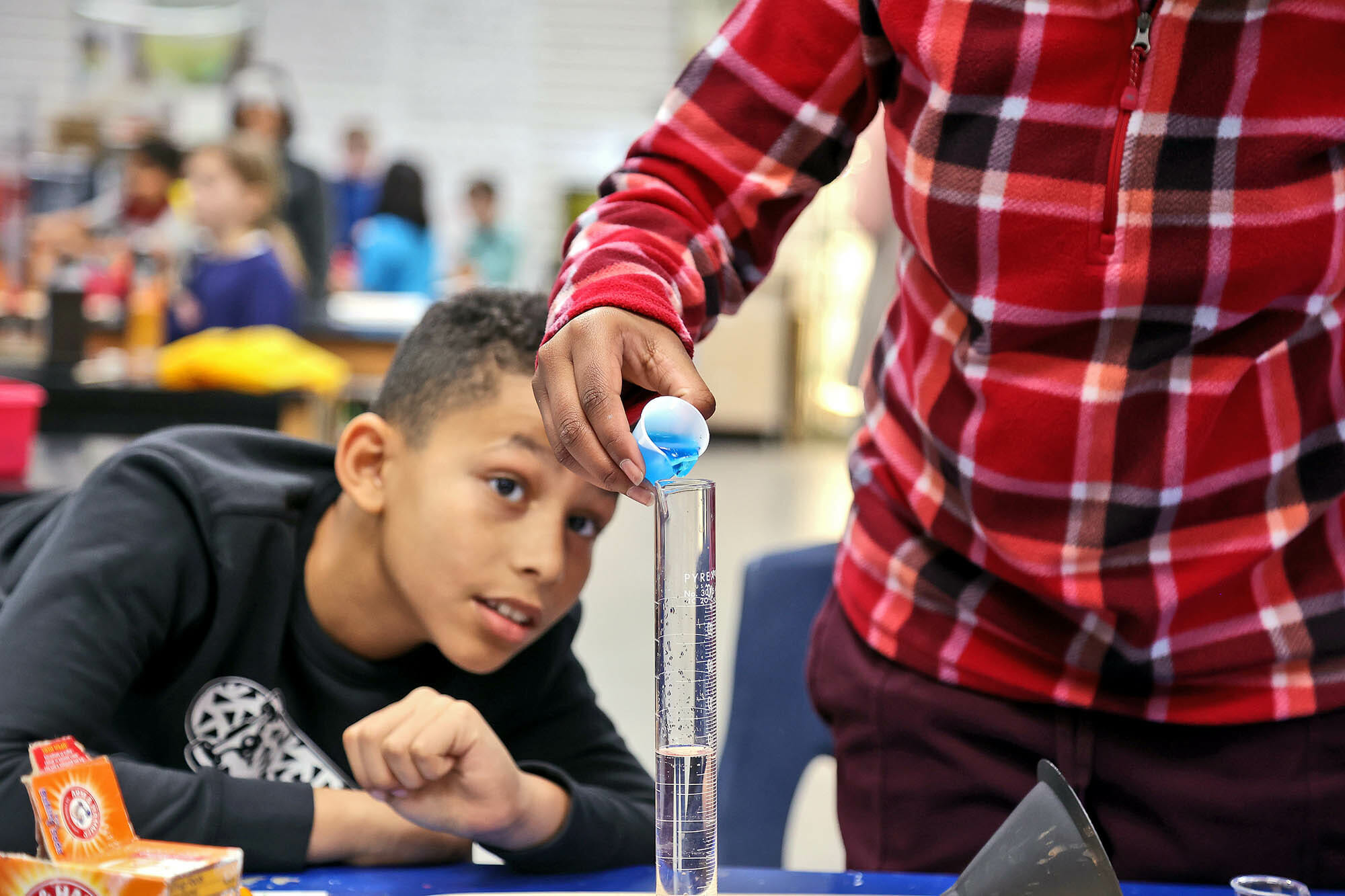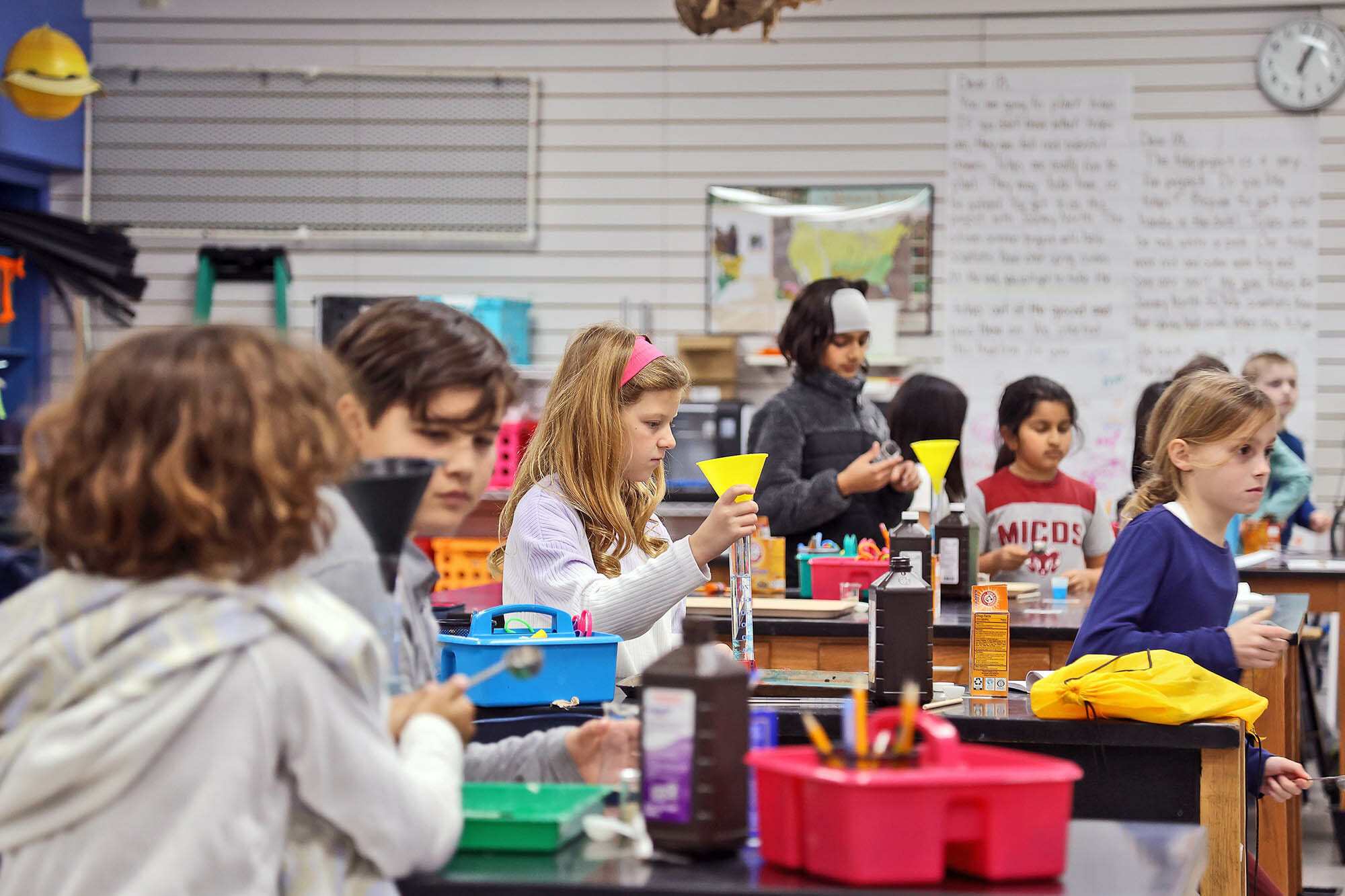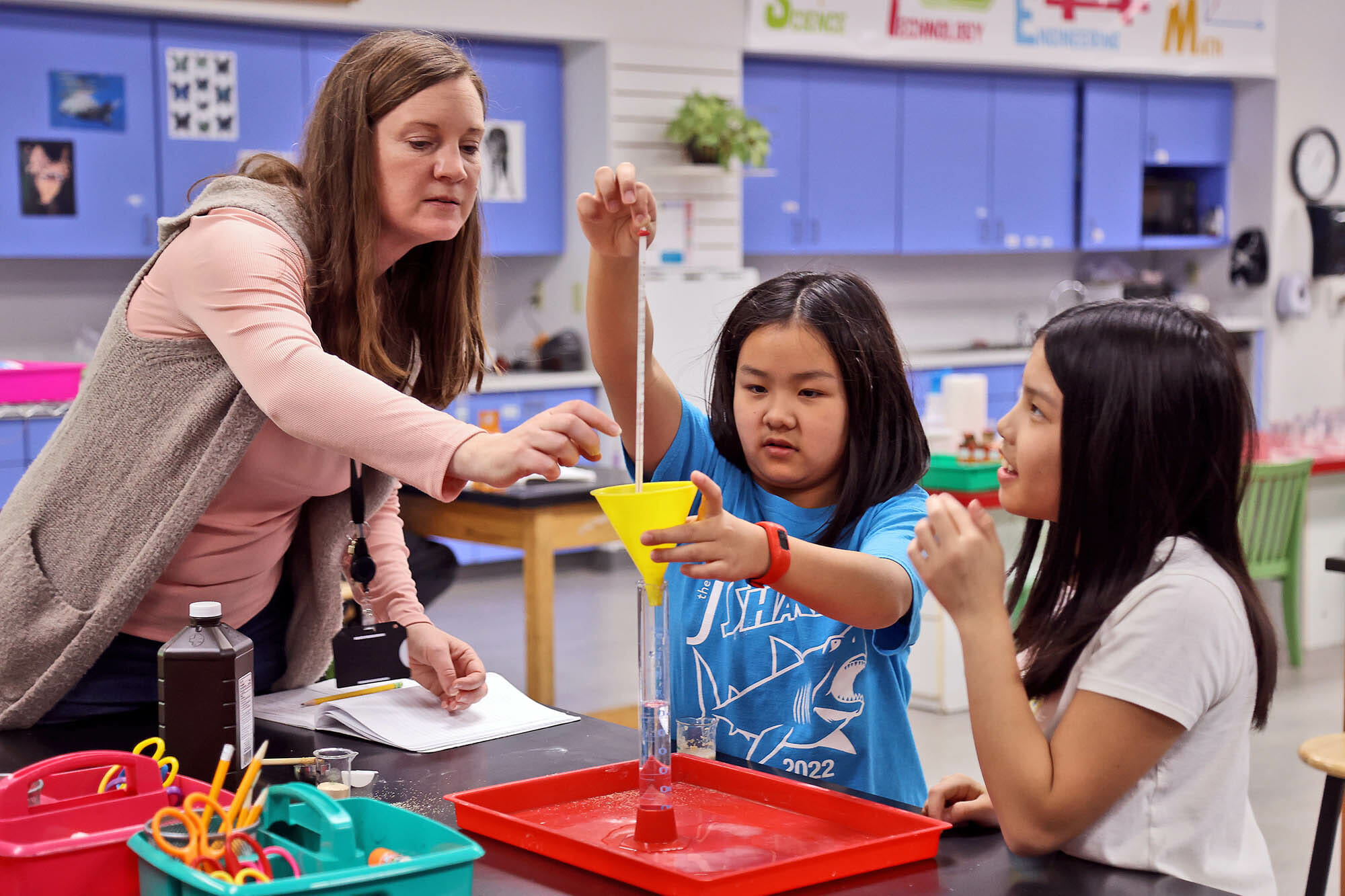Written by Laura Pupillo, Lower School Science Teacher
Measure, pour – reaction time! Students in first grade and fourth grade have been exploring reactions in class but with different goals in mind. First-grade students have entered their Earth, Moon, and Stars unit of study and are beginning with a deep exploration of our very own planet. Fourth-grade students are exploring energy transformations.
Launching into our study of Earth, we read the book Earth! My First 4.54 Billion Years by Stacy McAnulty. We learned that the climate on Earth has changed dramatically throughout its history. Earth in its youth was explosive, hot, and gassy! Molten lava spewed everywhere. To help first-grade students think about this period deeper, we built our own volcanoes. Students loved seeing the carbon dioxide bubbles flow out of our volcanoes as they combined baking soda and vinegar. Several students commented that the baking soda was like magma since it was under the volcano and the reaction was like lava since lava is what we call magma that has escaped the volcano.
As first graders continue their exploration, we will explore core samples and how volcanologists— geologists who study volcanoes—use these samples to determine when and where volcano eruptions have occurred. We’ll also explore our own volcanic past as we take a look at Taum Sauk Mountain in Missouri, our highest elevation point. Taum Sauk was also once a volcano. As part of the science department’s focus on Paleo Climate studies, first graders will be exploring Taum Sauk and other areas in the St. Francois Mountain Range to imagine what Missouri’s climate was like long ago.
Meanwhile, fourth-grade students are exploring reactions with an entirely different goal in mind. We have discovered that the amount of energy is fixed on the planet. You can’t make energy nor can you destroy it. You can, however, harness energy and transform it. We’ve explored potential and kinetic energy through physical collisions and the impact of inclined planes and weight. We know that energy can be transformed through sound, light, heat, and electric currents. Other than transforming energy using solid items, is it possible to transform energy during chemical reactions?
Our fourth-grade students were curious about this. Using baking soda, vinegar, and elephant toothpaste, we investigated endothermic (heat absorbing) and exothermic (heat releasing) reactions. Students hypothesized what would happen and carefully measured and recorded the starting temperatures of their liquids. After observing the reaction, they measured again. The combination of baking soda and vinegar was the most surprising. Students thought the release of carbon dioxide would cause heat with all the bubbles, but just by touching the side of the beaker, they could instantly feel the dramatic change in temperature. Moving onto elephant toothpaste, they found the opposite—an exothermic reaction. Exploring how chemicals store energy and create energy transformations will lead us into our next study of electrical circuits and batteries.
It is such a joy seeing our young scientists at work. The questions our students ask and how curious they are about the world around them make our learning such a great experience.
